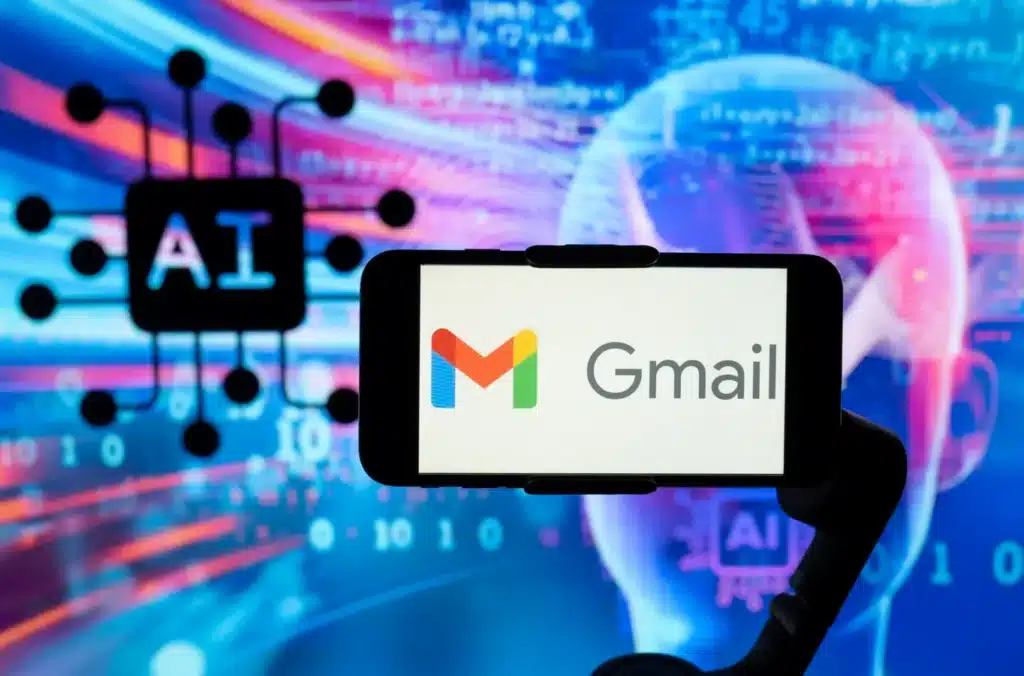More than 2.5 billion Gmail users are currently at risk of falling victim to a new wave of sophisticated AI-generated phishing attacks. These scams closely imitate legitimate support services and are becoming increasingly difficult to detect. This is true even for tech-savvy individuals like Sam Mitrovic, a Microsoft solutions consultant who recently shared his experience of being targeted by one of these scams. As a result, Gmail Users should be on high alert due to these phishing scams.
The Threat: AI-Generated Phishing Scams
In a report shared by Forbes, Mitrovic described receiving a dubious notification supposedly from Google. It requested approval for an account recovery. This was followed by a phone call from an Australian number, which Mitrovic wisely ignored. However, the scam didn’t end there. A week later, he received another notification and phone call. This time the caller pretended to be from Google Support.
Mitrovic took to his blog to warn others about this new phishing strategy designed to deceive users into sharing sensitive information. The scammers use Google Forms, a legitimate tool within Google Workspace, to create official-looking documents that appear trustworthy. The responses are then sent through Google’s own servers. This makes the phishing attempt seem even more authentic, which puts all Gmail users on high alert.
The fraudulent scheme typically begins with an email or notification claiming that the user’s account is being recovered or a password reset has been initiated. The unsuspecting user is then tricked into visiting a fake login page where they are prompted to enter their credentials in order to “cancel” the unauthorized request. This tactic can lead to users unknowingly providing hackers with their login details, which can then be used to compromise their accounts.
Gmail Phishing Scams on the Rise
Garry Tan, founder of Y Combinator, recently shared his own experience with these scams on X (formerly Twitter). In his case, a scammer posing as a Google Support representative falsely claimed that a family member was attempting to recover his account. Like Mitrovic, Tan’s experience highlights the growing sophistication of these attacks, which are designed to look as genuine as possible, making it difficult for even cautious users to distinguish between legitimate and fraudulent communication, and further signaling why Gmail users should be on high alert.
Google has been working hard to enhance its security features and reduce phishing attempts, but the use of AI in generating these scams has proven to be a significant challenge. The sophisticated technology behind these phishing schemes allows scammers to generate convincing emails, notifications, and even voice calls that sound like they’re coming from official Google sources.
What Gmail Users Should Watch Out For
Phishing scams are evolving, and it’s critical for Gmail users to be vigilant. Here are a few warning signs to look out for:
- Unsolicited Emails or Notifications: Be cautious of any unexpected messages claiming that your account is at risk or requires immediate action.
- Suspicious URLs: Always double-check the URL of any login page. Scammers often create fake sites that look like Google’s but have slightly altered web addresses.
- Unexpected Phone Calls: Google rarely contacts users via phone. If you receive a call claiming to be from Google Support, it’s best to ignore it and contact Google directly through their official channels.
- Requests for Sensitive Information: Be wary of emails or messages asking for passwords or verification codes. Google will never ask for your login credentials in this manner.
What Google is Doing to Combat the Issue
Despite the rise of these sophisticated attacks, Google is taking steps to protect users by alerting them to potential phishing threats and blocking malicious attempts before they reach your inbox, urging Gmail users to stay on high alert. However, scammers are constantly adapting, and even with Google’s robust security features, no system is completely foolproof.
Google has acknowledged that more needs to be done to address the rise of AI-generated phishing and is working on improving its technology to detect and block these more advanced threats. Google Forms, the tool being used to generate fake documents, is also being scrutinised to prevent its misuse in these scams.
How to Protect Yourself
To avoid falling victim to these phishing schemes, here are a few practical steps you can take:
- Enable Two-Factor Authentication (2FA): This adds an extra layer of security to your Gmail account, making it harder for hackers to gain access.
- Use Strong Passwords: Avoid using easily guessed passwords and change your password regularly.
- Report Suspicious Activity: If you suspect you’ve received a phishing email or call, report it to Google immediately.
- Stay Informed: Keep up with the latest news on phishing attacks and security threats to ensure you’re aware of new tactics scammers may use.
With over 2.5 billion users at risk, phishing scams continue to pose a significant threat to Gmail’s vast user base, putting all Gmail users on high alert. By remaining vigilant and following security best practices, users can safeguard their accounts from these increasingly sophisticated attacks.
